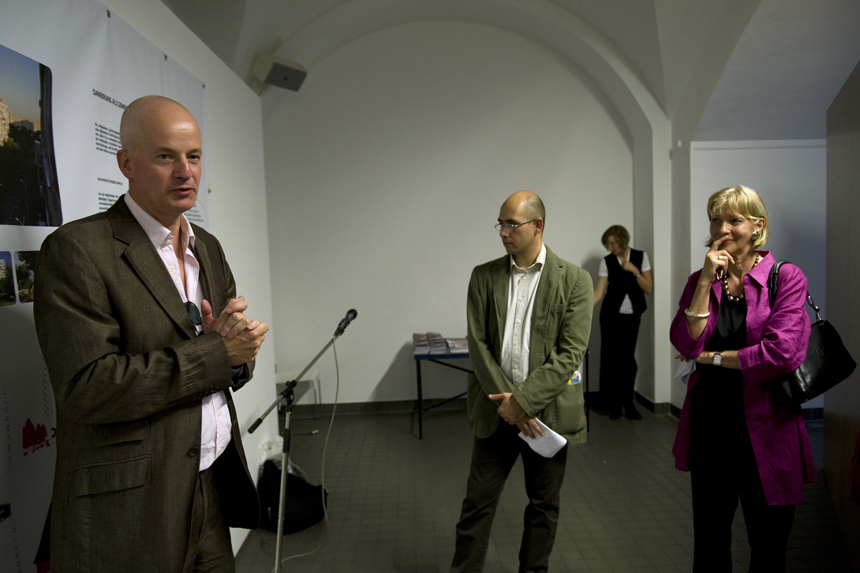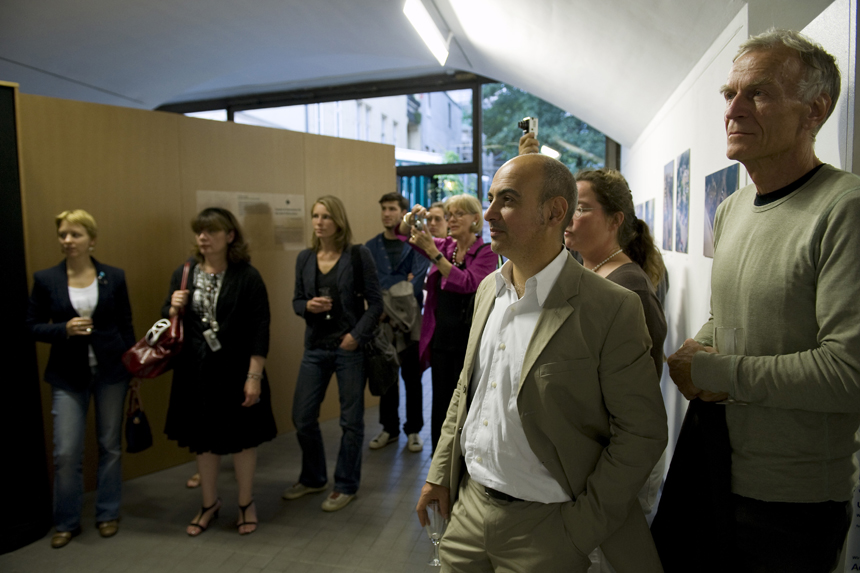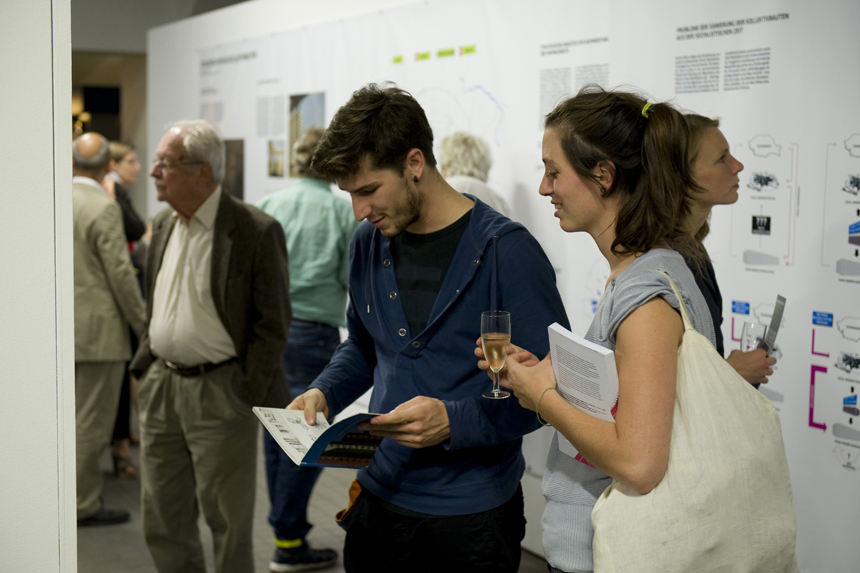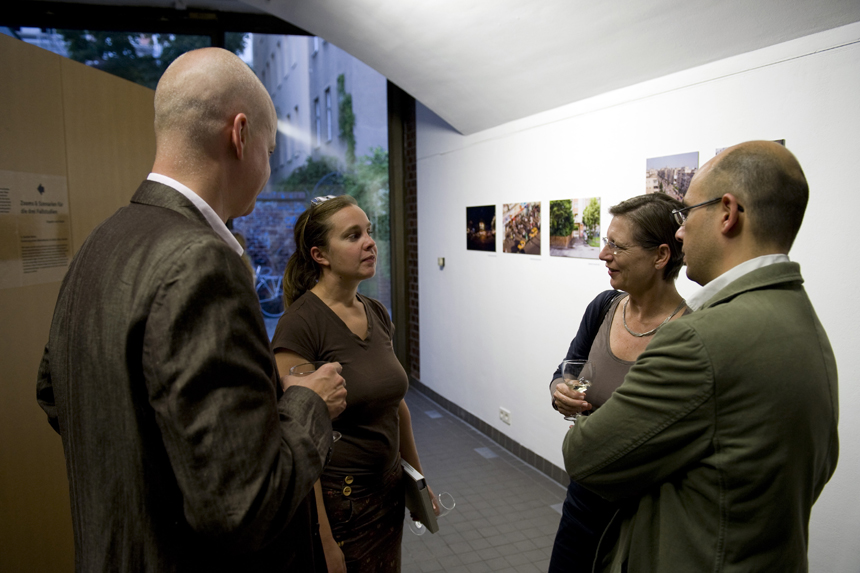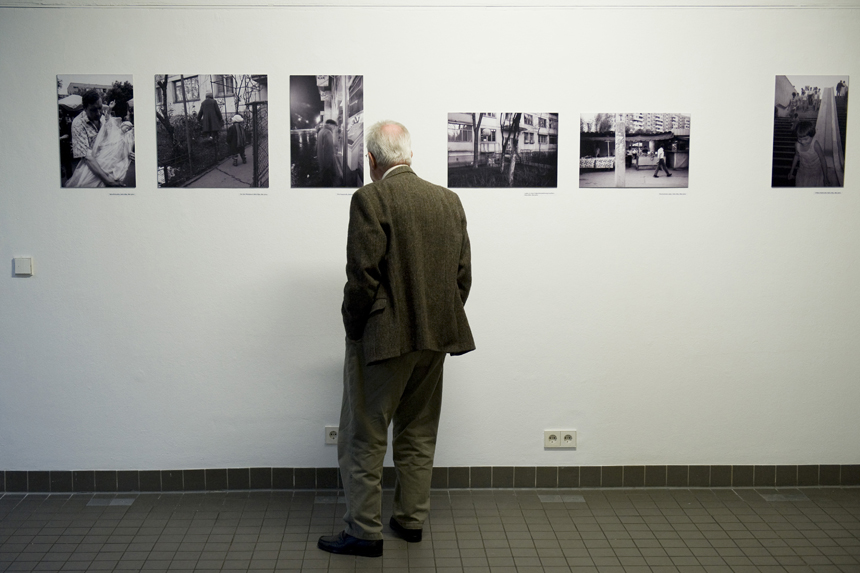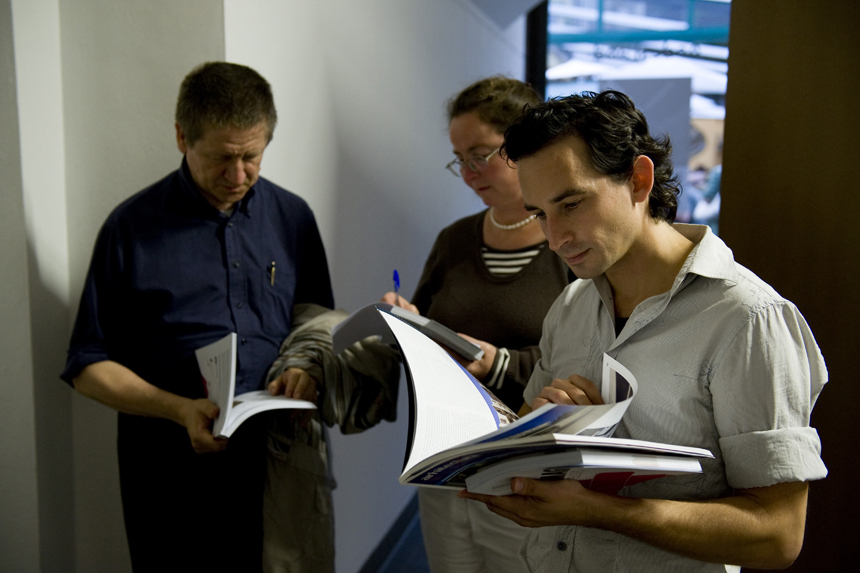An Archis Interventions, Zeppelin and Point 4 initiative, launched in cooperation with ATU, Space Syntax, Hackenbroich Architekten and Platforma 9,81. The cityscape of Bucharest is dominated by huge, standardized public housing estates built during the socialist era, mainly in the 1970 and 1980s – in which circa 70 per cent of the city's population still live. These 'concrete curtains' flank established major traffic axes, blocking the view of the parts of Bucharest that lie behind them. Alongside them stand more recently built estates, with a total of as many as 400,000 inhabitants. Following the collapse of state socialism and the introduction of a market economy, most public housing was privatized. Sitting tenants were able to acquire their apartment for a minimal sum. Market factors have since come into play: an apartment's value falls or rises according to its location, amenities and local infrastructure; some apartments are of interest to investors; others are suffering from neglect. Neither officials in the City Housing Department nor individual owners (most of whom are owner-occupiers), are equipped to cope with the new situation – and it is here that the »MAGIC BLOCKS« initiative seeks to make an impact. Launched by Archis Interventions in cooperation with local and international architecture offices and projects, »MAGIC BLOCKS« will present scenarios for the future development and use of housing estates and thereby stimulate public discussion of housing and other social issues in Bucharest. The exhibition illustrates this concept in the light of supplementary information on overall urban development in Bucharest. »Magic Blocks« opens up a new area of debate in architecture: it addresses the, until now, largely unexplored drawbacks of the privatization of public housing in former eastern bloc countries and asks, what alternatives are available. The situation in Bucharest is prototypical of the former eastern bloc cities that entered a transition phase after the collapse of state socialism, thereby shifting from a centrally planned to a free market economy in conditions determined by a global economy and international financial trading. The impact of this both on everyday lives and urban development has been accordingly dramatic. Democratization, the fastest possible privatization of state assets and market liberalization set the framework for this socio-political transformation. These all served largely to weaken the nation state's regulatory powers. In particular, an exaggerated confidence in market forces led people to overlook that non-economic factors are equally vital, if a society is to function well. The result of this was 'turbo-urbanism': the informalization of urban processes as a consequence of unbridled neoliberal capitalism and all its concomitant aspects. Cities were hit by a new construction boom that ranged from dubious investment projects to numerous informal settlements on the city margins, built mostly by private developers. Weak state control of such developments and even, a complete absence of regulation were typical. And, in the case of 'collective architectures' such as housing estates, municipal properties were privatized and the new owners/owner-occupiers largely left to cope alone. The state shed its public responsibilities quickly. This is the point at which Archis Interventions' project intervenes. Various initiatives and organisations came together in 2009 to investigate what has become a deeply troubling aspect of urban development in Bucharest, namely the administrative problems that have ensued from the privatization of former public housing. How, for example, are individual owner-occupiers to collectively manage the shared features of a property (its roof, stairwells, etc)? Who bears responsibility for planning and implementing modernization schemes? How might individual owners be made aware of their responsibility to care for, not only their own apartment but the entire building in which it is located, in order to maintain the market value of both? Market value is also seriously aggravated by superordinate neighbourhood factors such as the quality of local transport and amenities – for this in turn affects the availability and size of the loans urgently needed for modernization. Informal modes of negotiation between owners/owner-occupiers in a single building are also largely inadequate when interests diverge, as is the representation of their common or individual interests to the city administration. Furthermore, questions regarding the management of public areas that belong to the city remain unresolved. And, last but not least, there is little awareness in the city of the range of architectural design options now available. The first step was to systematically identify and document this cluster of problems// the aforementioned problems and develop a range of potential solutions. A crucial factor here is the dire lack of awareness – both among policymakers and the general public – of how failure to address these issues will impact negatively on the city in the future. Publications, exhibitions, public discussions and local campaigns are therefore a vital aspect of this intervention, for they keep these issues in the public eye, and thereby raise awareness of them among tenants, owners/owner-occupiers, and the relevant policymakers in the city administration and at the regional and national levels. What has happened to date marks only the beginning of an ongoing challenge to negotiate the future prospects of an architectural feature that, thanks alone to its dimensions, is an irrevocable part of Bucharest – as well as of the people to whom it is home. Zeppelin – Stefan Ghenciulescu, Constantin Goagea, Cosmina Goagea/ http://www.e-zeppelin.ro/magic-blocks Point 4 – Justin Baroncea Archis Interventions – Kai Vöckler with Space Syntax – Esenghiul Abdul, Christian Beros ATU – Vera Marin Platforma 9,81 – Marko Sancanin Hackenbroich Architekten – Wilfried Hackenbroich Photos by Dragoş Lumpan will be on view as part of the exhibition.
Diese Ausstellung wurde ermöglicht mit der großzügigen Unterstützung von:






